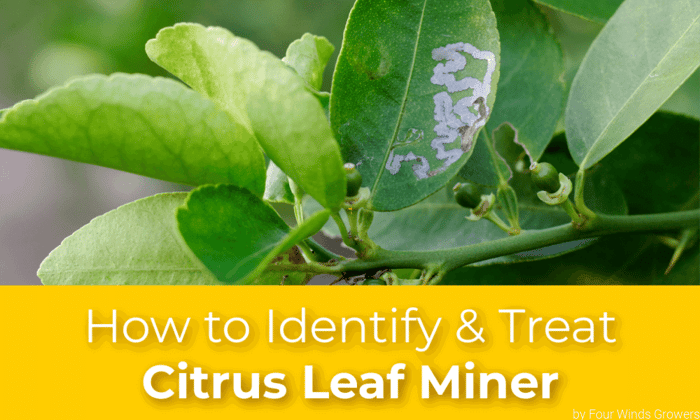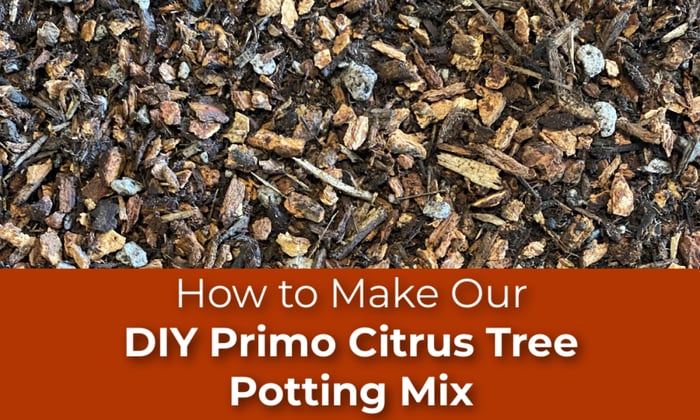Table of Contents
Setting the Stage for Citrus Leaf Miner Discovery
Picture this...
You're perusing your collection of gorgeous citrus trees one Sunday morning. Coffee in one hand, phone in the other (on camera mode, naturally) and Spotify softly playing your Sunday Chill Vibes playlist to set the mood just right.
Like every morning, you're checking things out. Admiring the fresh, soft, shiny new flush of new leaves, looking for more new growth. The flowers have bloomed and dropped, and perhaps little fruitlets are emerging and giving you promise of fruit in your future.
Just then...
You notice it. The ever so slight bend in a leaf. The curl of an edge. An imperfection.
What the.... ?
You reach for the leaf and turn it over. Underneath is a vast yet intriguing maze winding its way around like a Labyrinth. You peer closer. At the end is a tiny yellow worm creature!
What the helly?
"Someone's broken into my leaf and it looks like they've moved in!" you think aloud.
If you're a first timer, you may panic a little, post some photos of your leaves on Reddit, do a Google search and come across this blog post- you know, get some real answers to what the hellionte these worms are and are they going to kill my tree?
If you're a seasoned gardener, you may see your suffering leaves and say "They're baacckk" and get to smashing these pests out of your life and off of your citrus trees immediately.
The citrus leaf miner is a common garden pest that thrives in the tender flush of the evergreen citrus trees. The squiggly lines are an indication of the tunnels that the citrus leaf miner larvae makes as it tunnels its way through a leaf.
What is Citrus Leaf Miner?
Citrus leaf miner are moths that are attracted to the new flush/leaves of citrus trees. These leaves make for the perfect larvae food, but once a leaf has matured and hardened, the leaf is no longer tender enough to provide the ideal site for the moth to lay its eggs and larvae to feed.
TIP #1: Avoid pruning in the late spring to summer, when citrus leaf miner is most active. Pruning will stimulate new growth during the time of year the adult leaf miner is most active, summer. They will target those new leaves to pupate. If you prune in the very early spring, after your last frost date, the new growth will have time to harden before the citrus leaf miner is most prevelant.
Temperatures between 70-85 F and a slightly high humidity provide the ideal environment for the adult citrus leaf miner. Removal of slightly damaged leaves is not advised because they are still producing food for the tree.
TIP #2: Avoid overfeeding your citrus trees during the summer and fall, as this will cause a growth spurt of tender tasty leaves. Remove rapidly growing shoots (water sprouts) during this time to reduce potential feeding and egg laying points.
Solutions
Beneficial insects will be attracted to the Citrus leaf miner larvae, if enough are present they will control the problem. If you use a pesticide, the beneficial insects will be affected also. Leaves damaged by leaf miners are unsightly, but if the infestation is light, it may be better not to spray. You can see the larvae inside the leaf, and squish them with your fingers.
Citrus leaf miner damage is almost completely cosmetic and won't kill a well-established tree. While unsightly, the damaged foliage should be left on the tree as removing this growth will encourage more fresh leaves for the larvae to feed on.
With this in mind it is best not to prune your citrus tree while dealing with leaf miners and rather wait until spring to do any necessary pruning. Again, you can always squish the larvae within the leaves themselves and treat them with the following.
There are a variety of treatments on the market with the active ingredient spinosad have proven themselves quite effective against the active larvae infestations. It can be toxic for honeybees if they are exposed to the product before it has dried. An evening application would ensure that honeybees would not be affected. A quick google search for "spinosad spray" will bring up a variety of organic and conventional solutions for you to choose from. Pick your favorite brand and apply according to the instructions on the container to ensure the safest and most effective results.
Imidacloprid, while highly effective, is a chemical treatment that we do not advise using as it is very toxic to honeybees.
Shop Citrus Trees
Check out our Citrus Growing Tips for more information!
Get in the know about HLB(Huanglongbing / Citrus Greening Disease) and help save your community's citrus. Only source citrus trees from reputable growers.
Source: http://ipm.ucanr.edu/PMG/PESTNOTES/pn74137.html




